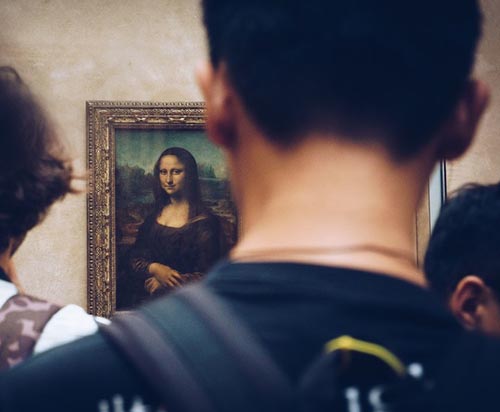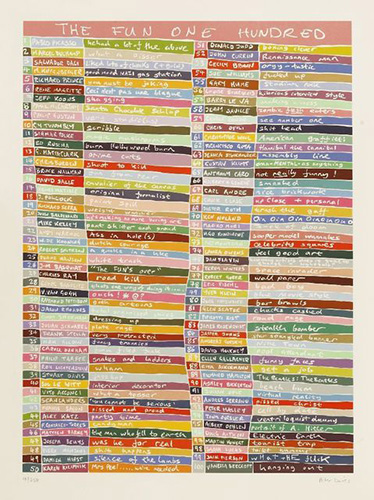
How to observe paintings, introduction
ArtWizard 08.06.2020
“Art is a creation of the eye and can only be hinted at with words”
John Baldessari
While many paintings can be appreciated quite simply for what they are, our pleasure of looking at them can be enhanced by sharpening and training our observing skills. Artists make paintings because they feel compelled to as they are inspired to create analogies with the world that is surrounding us and to express as they see life using paint. While it is difficult to express what we see in words, as art is a visual language, some comparisons and observing techniques will be presented in the next articles to see if we can obtain more meaning or pleasure from the paintings we encounter in our lives either in museums or galleries or in private collections. It is interesting to start with a comparison of two paintings made with oil on canvas and on wood.
,_1503_–_1505_:07.jpg)
Leonardo da Vinci, Monna Lisa (La Gioconda), 1503 – 1505 /07
These are about two great ladies both mysterious and residing at the Louvre, originally a private royal palace and transformed in 1793 into the first public gallery. The Mona Lisa of Leonardo and the Portrait of a Black Woman and both enigmatic and each one of them represents a moment in the art history. Covered in draperies to flatter their bodies, they appear calm, self -sufficient and composed, their hands in repose.
,_1800.jpg)
Marie-Guillemine Benoist, Portrait d'une négresse (Portrait of Madeleine), 1800
One is the most visited and acclaimed painting in the gallery, the other sits in a quiet corner in an opposite part of the palace. The Portrait of a Black Woman celebrates the abolition of slavery in the colonies, despite her subjects naked breasts which could suggest a continuum of another kind of bondage. As opposed to this image, we see the painting of Leonardo as a potential marriage portrait that never left its studio. This unlikely juxtaposition of paintings gives us an insight into people’s attitudes towards collecting art. If we take as an example the painting The Trubina of the Uffizi by Johann Zoffany, commissioned in 18th century by Queen Charlotte, it shows us the special hexagonal room in the Uffizi Palace in Florence.

Johan Zoffany, The Tribuna of the Uffizi, 1772-8
We see at the painting how the Renaissance works are hung “salon style” – in serried ranks, covering the walls – and the visiting Grand Tourists, who are discussing the highlights. Zoffany is so meticulous that we can even identify painting by Raphael, Holbein and Rubens and even recognize which of them are discussed by the public. This artwork speaks to us about the variety of artistic styles and subject matter. In stark contrast, the painting of Peter Davis is in a shopping list format, to which he adds some personal comments in the form of encrypted comments.

Peter Davis, The Fun One Hundred, 2001
Both examples examine very different ways paintings are made and so the way they are observed changed in time and it also, as a result of that, changed the way the contemporary and conceptual art is made and the perception of it. To this end, the conceptual artist Marcel Duchamp argued that the existence of an artwork depends on both the artist and the spectator. And for the conceptual art for example to exist, the spectators need to be familiar with its symbols and methods and the way it means to express the artist visions.
So, this is why there a several ways to look at a painting to be clarified, examining first the shape, medium, materials, composition, styles and techniques, symbols etc., and after that the different themes of the paintings, namely portraiture, still life, narrative landscape and abstraction.
We will start with discussing the shape and support materials and how they play a role in the way we perceive the paintings in our next article.
